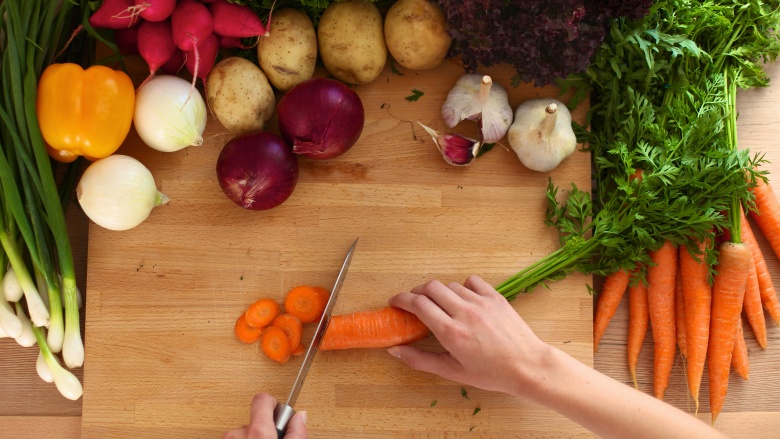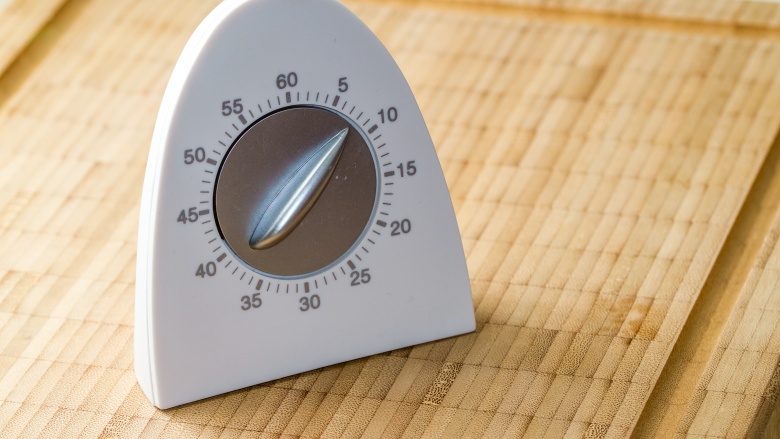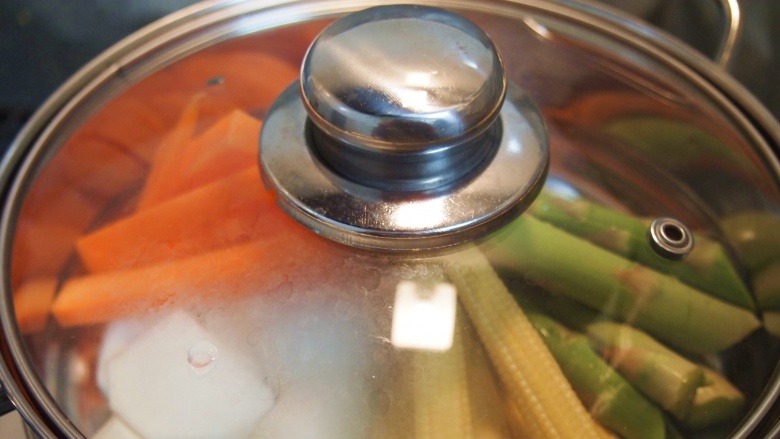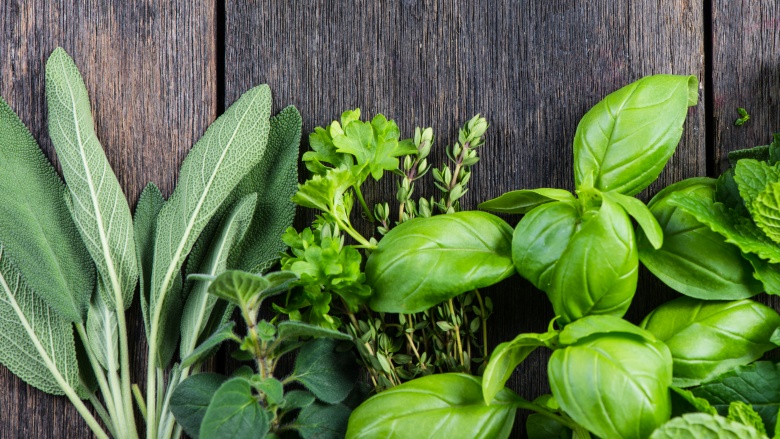The Trick To Getting Perfectly Steamed Veggies
Without a doubt, steaming is one of the easiest preparations for vegetables. It allows you to get a plate of veggies from the stove to the dining room table in practically no time—and they taste amazing. Food is cooked by the magical steam that's created when boiling water vaporizes. Without directly submerging it into liquid to cook, the food retains its nutrients and unique flavors.
While steaming vegetables is a simple way to get your recommended daily servings, you'll want to avoid mushy, bland, lackluster results. Keeping in mind a few key cooking rules, you'll find yourself steaming the entire produce aisle in no time.
Golden rule of veggie prep
What's a surefire way to hone your knife skills? Without a doubt, veggie prep. Vegetables that are cut uniformly cook more evenly throughout and tend to finish cooking at about the same time, but cutting them to roughly the same size is harder than it sounds. While you can create a vegetable medley for steaming, you may want to consider grouping vegetables with similar textures together since they will more likely steam at a similar rate. Leafier produce like spinach naturally takes less time to cook, while denser ingredients like carrots or potatoes require more.
Timing is everything
If you've ever had to eat overcooked and mushy vegetables, you know how upsetting this can be. To avoid this plight, be mindful of how much cooking time different types of vegetables require. Here are general guidelines to help you determine the perfect timing:
-Arugula, spinach, and other leafy greens: 2-3 minutes
-Asparagus: 4-6 minutes
-Broccoli and cauliflower: 5-6 minutes
-Brussels sprouts: 9-10 minutes
-Carrots cut to 1/4-inch thickness: 6-8 minutes
-Green beans: 4-5 minutes
-Peas: 2-3 minutes
-Potatoes and squashes: 10-20 minutes
-Zucchini and similar squashes: 6-7 minutes
Tools of the trade
Every kitchen job needs the right kitchen tools. While you can get a lot of things done with the wrong tools, it'll take you longer and make your job more difficult. It's just easier if you're properly equipped. You'll need a cutting board, preferably one that's clean, dry, and sturdy. Opt for wood over plastic as a general rule. You'll also need a sharp chef's knife—if it's dull, take a run at it with your sharpening steel. Provided you know what you're doing, this small time investment up front will save you a lot of time later. Finally, if you want to steam veggies the right way, you need a large pot with a lid along with a steamer basket or heatproof colander.
How to do it right every time
Follow the golden rule: using your sharp chef's knife, cut the vegetables into uniform, serving-sized pieces.
Prepare the steamer: add 2 inches of water to your large pot. Place the steamer basket or heatproof colander inside so it's secure but not touching the water. Bring the water to a boil over high heat.
Steam your veggies: add your prepared vegetables to the steamer basket or heatproof colander, cover the pot, and reduce the heat to medium low. Allow your vegetables to cook until they are tender and easily pierced with a knife or fork. Keep in mind some vegetables take more time to cook than others. You should set a timer for 3 minutes and check for doneness, allowing more time for heartier produce.
Season your veggies: season your veggies with olive oil, salt, and pepper or as desired.
If you're a visual learner, this handy video breaks down all the steps.
Steaming in a microwave
The tenets for steaming vegetables in a microwave are similar to the ones observed for stovetop steaming. The steam still does most of the cooking, save the fact that a small amount of water makes contact with the vegetables. Add a small amount of water to a microwave-safe bowl or dish—about as much as you would use to clean the vegetables and no more than 1/4 inch. Add your vegetables to the water and cover the bowl with plastic wrap. Using a fork, gently poke holes in the plastic wrap for steam to escape and cook until the vegetables are tender and easily pierced with a knife or fork.
5 ways to maximize flavor
While olive oil or butter are fine ways to season steamed vegetables, there are occasions when you may want to infuse them with a little more oomph, while still retaining their light and fresh flavors. Try incorporating a few aromatics, a splash of acidity, or a touch of briny flavor.
Soy sauce or broth: instead of or in addition to salting, try adding a couple tablespoons of low-sodium soy sauce, chicken broth, or vegetable broth to the cooking water. It lends a beautifully delicate flavor to steamed vegetables.
Fresh herbs: whether you add whole sprigs of parsley, thyme, or rosemary to your steamer basket or garnish your finished veggies with them, fresh herbs are an easy and inexpensive way to imbue your dish with fragrance and depth.
Sauteed garlic: quickly saute minced garlic while your vegetables steam and fold the bits in at the end for an extra pungent kick.
Lemon juice: lemon zest or a splash of juice pairs exceptionally well with bright, green vegetables, brightening them up with a light touch.
Vinegar: you can season your cut vegetables with 1 or 2 tablespoons of apple cider, balsamic, or red wine vinegar before placing them in the steamer basket. The steam will cook off most of the acidity and leave the vegetables even sweeter.
Get thee to a green market, load up on seasonal produce, and—with steamer basket in hand—steam them all!






